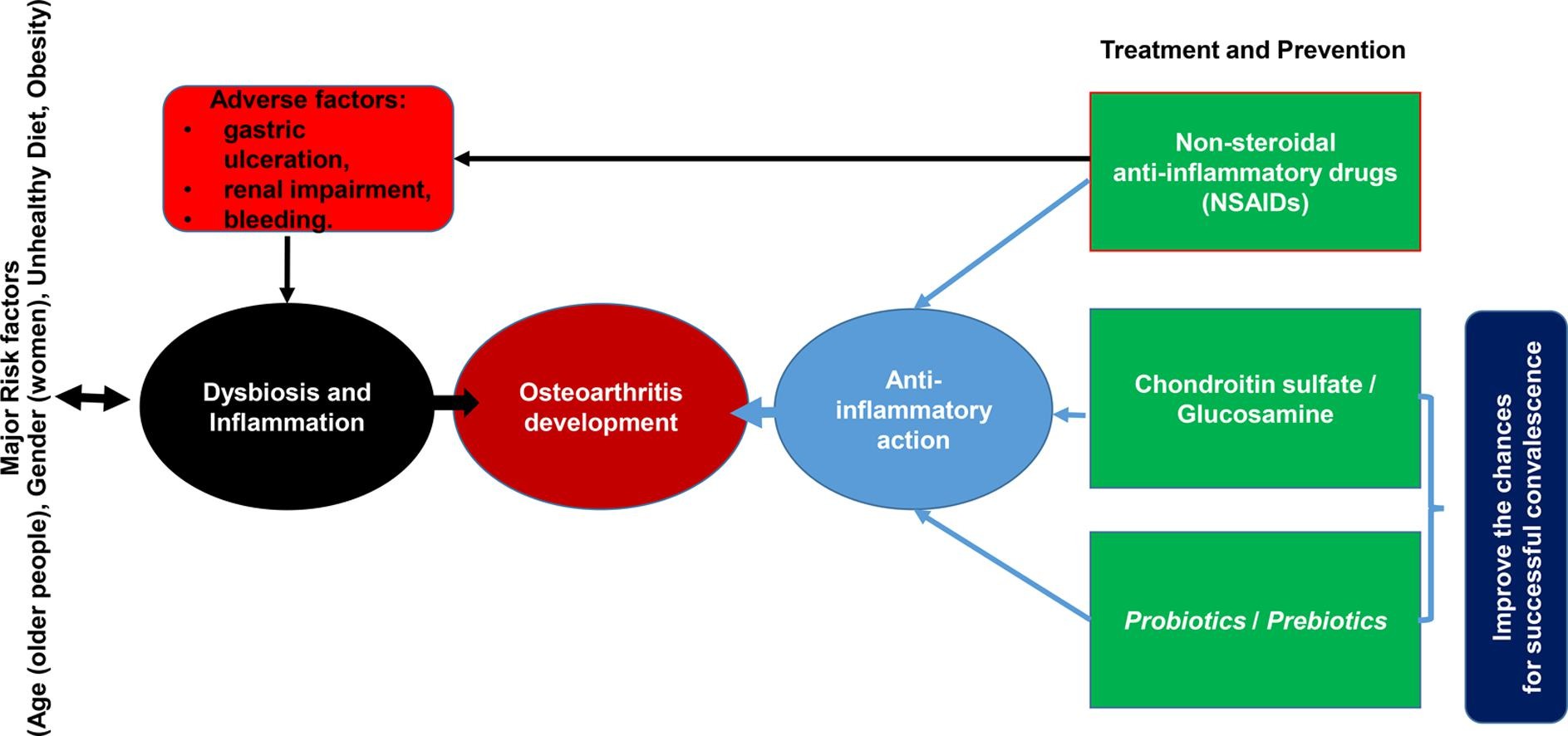Crosstalk between gut microbiota and osteoarthritis: A critical view
Oleksandr Korotkyi Journal of Functional Foods Volume 68, May 2020, 103904
Highlights
• Osteoarthritis (OA) is heterogeneous joint disease characterized by pain.
• NSAIDs are used to reduce pain, but associated with side effects.
• Use of chondroprotectors is still remains to be elucidated and its efficacy unclear.
• Gut microbiome influences host metabolism, innate and adaptive immune system.
Osteoarthritis (OA) is a highly heterogeneous joint disease characterized by joint pain and a progressive loss of articular cartilage. The therapeutic potential of using probiotics to treat OA has only recently been recognized, with a small number of animal and human studies having been undertaken. Transfigurations of gut microbiota, as well as the favorable results associated with it, can be reached by maintaining a healthy lifestyle, including physical exercises, healthy diet enriched with vitamins, minerals, prebiotics and probiotics, and regular sleeping habits.
The mechanisms of cartilage degradation in osteoarthritis are multifactorial and several nutritional constituents can be aimed at numerous pathways, what brings out corresponding results. We considered, that the treatment with probiotics and/or prebiotics plus chondroprotectors and/or glucosamine may increase the chances for successful convalescence.
Still there are very few studies evidencing the results of such treatment option. Future research should focus on describing the mode of action and efficacy of this kind of combined treatment, taking into account personal characteristics of patients.














